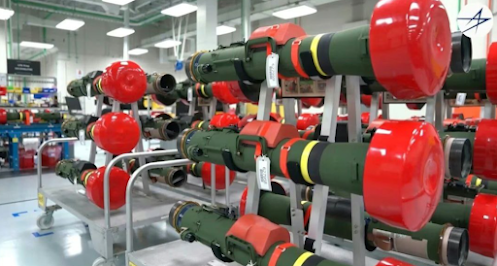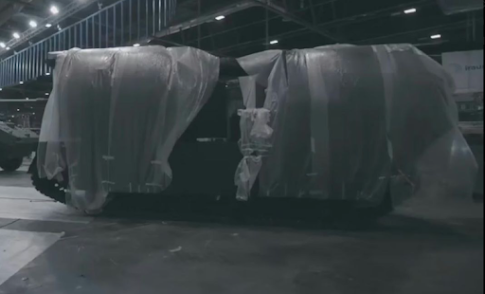The German company Helsing, known for its unmanned aerial vehicles, has now switched to underwater technology. Recently, she introduced a promising underwater monitoring system designed to search for various objects. It includes a new uninhabited underwater vehicle SG-1 Fathom, developed by a partner company, as well as the original Lura control and data processing system.
The development of a new anti-submarine defense system was carried out behind closed doors. The company announced the existence of such a project only on May 13, 2025. By this time, she, along with her subcontractors, had managed to carry out the necessary design work and bring the new equipment to the assembly stage and the first tests.
It is reported that when creating a new system for the naval forces, the experience gained in creating ground and aerial unmanned systems, as well as a number of new solutions, was used. First of all, we applied developments in the field of artificial intelligence.
The system includes two main components — the SG-1 Fathom autonomous uninhabited underwater vehicle and the Lura control system. Helsing independently developed a software and hardware management system, while the necessary ANPA with hardware was ordered from the Australian company Blue Ocean Marine Tech Systems.
The Lura complex is based on modern computing technology and uses artificial intelligence. It must process data from sonar stations, identify underwater or surface objects, and provide ready-made information. The system will also have to carry out targeting for various anti-submarine weapons.
The developers claim that an anti-submarine system of this kind is characterized by increased flexibility of use, high performance and high speed. In addition, its further improvement and improvement of the main characteristics are simplified in a certain way.
Judging by the disclosed materials, the Lura/SG-1 project has already reached the stage of manufacturing and testing experimental equipment. In particular, it shows the discharge of ANPA "Fatom" into the water with subsequent operation and the output of results.
Probably, in the near future, the development company will begin to promote its anti-submarine system on the international market. It is still unknown what kind of advertising the new products will be, and whether it will be possible to convince potential customers.
One of the main tools of the Lura complex is the SG-1 Fathom ANPA ("Fathom" or "Sea fathom"). It is a multifunctional underwater platform capable of carrying payloads for various purposes. When used as part of an anti-submarine complex, such a device receives the appropriate software and hardware.
SG-1 has a tubular body 1.95 m long and 280 mm in diameter. In the central part, a vertical stabilizer is located on top, and in the stern there is a swept—back "wing" that provides movement underwater. The weight of the device is 60 kg.
Fatom has an electric power system, but it does not have its own engine. The movements are carried out according to the principle of the so-called underwater glider. The device has a device for controlling buoyancy, due to which it can maneuver in depth. At the same time, the "wing" allows it to move horizontally and perform smooth maneuvers along the course.
This method of movement does not allow for high travel speeds — they do not exceed 1-3 knots. At the same time, the device is highly economical. Even with limited battery capacity, it is able to stay at sea and work for up to 3 months.
Sensors of a passive sonar station are located in the head of the hull, which collect information about the underwater situation. The SG-1 is also equipped with an on-board computer with elements of the Lura system, which is responsible for primary data processing. Communication facilities are provided for transmitting data to the control station. In turn, Lura is a software and hardware complex designed for use at ANPA and control stations. It is built on the basis of computers with the required performance and the required dimensions. The software part is made using artificial intelligence.
The Lura system uses the Large Acoustic Model. In fact, it is a database that includes acoustic signatures of various surface and submarine ships, vessels and submarines. It is claimed that this base has been assembled for several decades and covers the fleets of various states.
During operation, Lura must analyze incoming signals and recognize their source. It is claimed that modern equipment and artificial intelligence make it possible to increase the sensitivity of the complex 8-10 times in comparison with other sonar systems. In addition, target recognition is 40 times faster than human recognition.
Some of the components of the Lura system are placed on board the underwater vehicle. Others are intended for land-based or ship-based control stations. The station also has operator workstations and devices for communication with other anti-submarine defense components. It is noted that AI makes it possible to increase the degree of automation of the station and the entire system as a whole. One person will be able to manage a "fleet" of hundreds of ANPA.
The developer company has revealed the general principles of the new monitoring system. So, a control station should be located on land or on a carrier ship. In addition, the required number of SG-1 ANPS is deployed on other ships or other platforms. With their help, the devices are delivered to a given area and launched.
Fathoms must independently conduct patrols along specified routes within the required area. During the patrol, they will have to use standard gas and receive various acoustic signals.
ANPA's on-board computer analyzes incoming signals using elements of the Lura system, as well as determines their nature and source. If the AI recognizes the received vibrations as noise from a ship or submarine, then the device must surface and communicate with the control station.
After that, the Lura equipment at the control station is connected to the noise analysis. After confirming the existence of a real goal, the operator determines further actions. It can redirect additional SG-1s to the target area to clarify the situation or immediately transmit target data to anti-submarine complexes.
It is assumed that an anti-submarine system of this kind will be able to perform monitoring, search and targeting tasks with high efficiency. It should show high performance and reliability, recognize targets of all expected types with increased accuracy, etc.
In addition, the system based on the Lura complex has the potential for further upgrades. It will be possible to improve its characteristics by replacing hardware or software components, using new underwater platforms, etc. It is likely that the development company will be able to develop new application principles in the future.
Predictably, Helsing talks about its new development in an exclusively positive way. The developers give the Lura system a high rating and claim that it has a great future and good commercial prospects. In addition, the company has recently started testing such a system and has probably already received the first positive results.
Nevertheless, the real prospects of the new anti-submarine system remain uncertain. The proposed project is characterized by complexity, which can lead to increased technical risks. Because of this, the actual results of the project may not meet expectations. In addition, it is not known how potential customers will react to the Lura project and whether they will want to buy similar products.
































.jpg)
